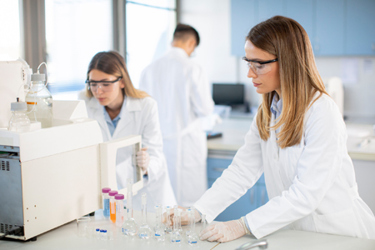Thermal Analysis In The Pharmaceutical Industry
By Monika Schennen

The German pharmaceutical market, valued at €56.5 billion in 2022, underscores the importance of consistent quality and innovation in drug development and production. Thermal analysis techniques such as Thermogravimetric Analysis (TGA), Differential Scanning Calorimetry (DSC), and Sorption Analysis (SA) are essential tools for evaluating material properties, compatibility, and stability in pharmaceuticals.
TGA monitors mass changes under controlled temperatures and atmospheres, identifying volatile components, thermal stability, and oxidative resistance. It is particularly useful in multi-component systems, decomposition kinetics, and coupling with gas analysis techniques for identifying volatile degradation products.
DSC measures heat flow during phase transitions, offering insights into material properties like melting temperature, enthalpy, glass transition temperature, and polymorphism. Modulated DSC (MDSC) adds precision in complex systems by separating heat flow into reversible and non-reversible components, aiding compatibility testing and amorphous content analysis.
SA quantifies moisture interactions, such as adsorption, desorption, and structural changes, under variable relative humidity and temperature conditions. This is critical for ensuring stability, as moisture-induced recrystallization can affect mechanical, chemical, and pharmacological properties.
These techniques enable efficient compatibility testing, as seen with magnesium stearate mixtures, and the assessment of glass transitions for amorphous materials to predict stability risks. Requiring minimal sample sizes, thermal analysis methods are especially beneficial in research environments, providing rapid, accurate data to optimize formulations and ensure high-quality pharmaceutical products.
Get unlimited access to:
Enter your credentials below to log in. Not yet a member of Pharmaceutical Online? Subscribe today.
